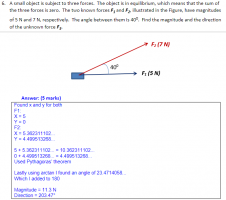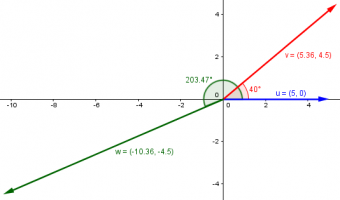I have basically solved this entire problem, however, someone I know keeps telling me that I shouldn't have added the 180 to the angle that I found. In my mind it doesn't make sense, because in order to face the 3rd force force away from the others, I would need it to be in the range of 180.
Am I doing it wrong?
Am I doing it wrong?



